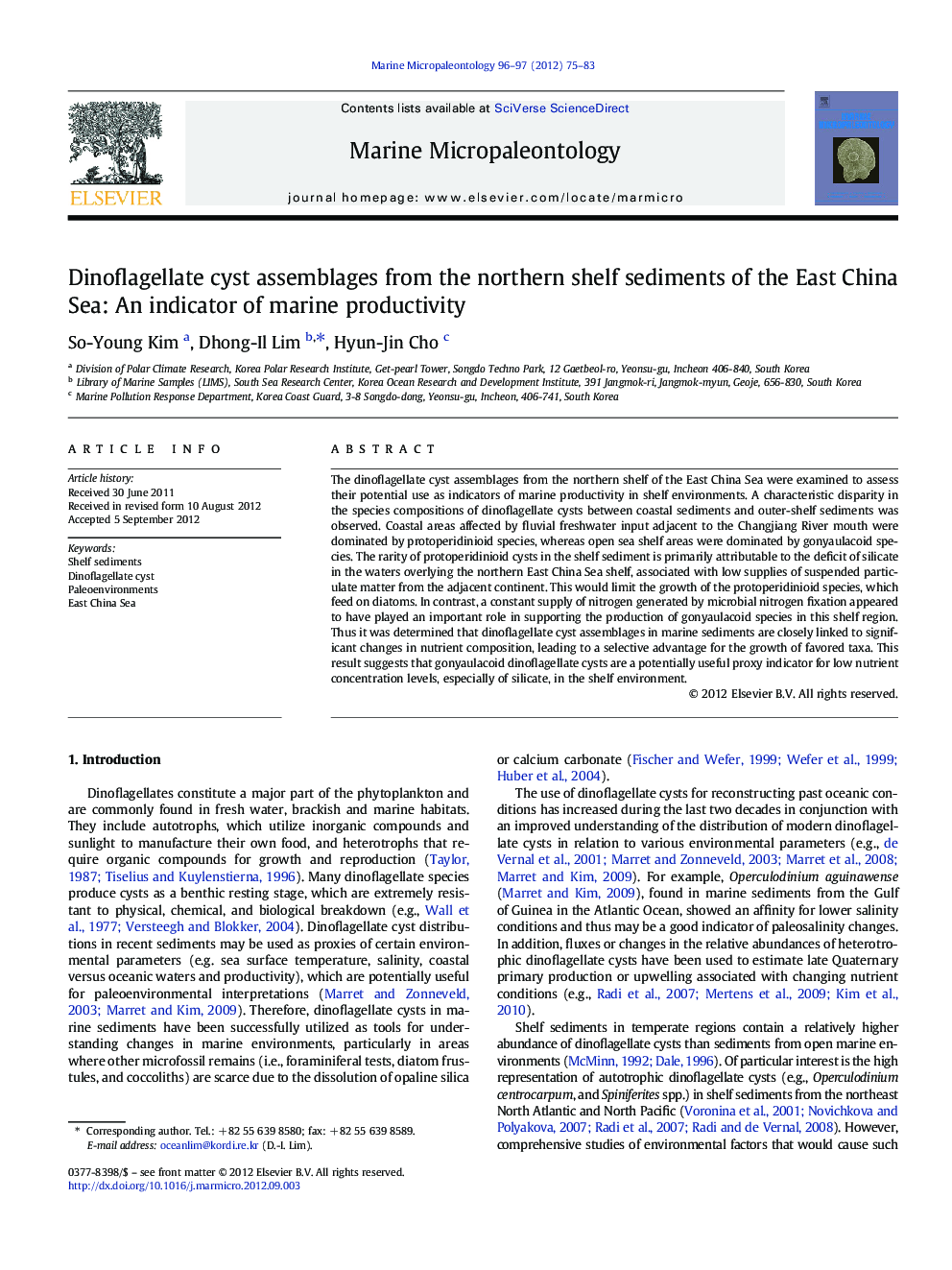| Article ID | Journal | Published Year | Pages | File Type |
|---|---|---|---|---|
| 4748968 | Marine Micropaleontology | 2012 | 9 Pages |
The dinoflagellate cyst assemblages from the northern shelf of the East China Sea were examined to assess their potential use as indicators of marine productivity in shelf environments. A characteristic disparity in the species compositions of dinoflagellate cysts between coastal sediments and outer-shelf sediments was observed. Coastal areas affected by fluvial freshwater input adjacent to the Changjiang River mouth were dominated by protoperidinioid species, whereas open sea shelf areas were dominated by gonyaulacoid species. The rarity of protoperidinioid cysts in the shelf sediment is primarily attributable to the deficit of silicate in the waters overlying the northern East China Sea shelf, associated with low supplies of suspended particulate matter from the adjacent continent. This would limit the growth of the protoperidinioid species, which feed on diatoms. In contrast, a constant supply of nitrogen generated by microbial nitrogen fixation appeared to have played an important role in supporting the production of gonyaulacoid species in this shelf region. Thus it was determined that dinoflagellate cyst assemblages in marine sediments are closely linked to significant changes in nutrient composition, leading to a selective advantage for the growth of favored taxa. This result suggests that gonyaulacoid dinoflagellate cysts are a potentially useful proxy indicator for low nutrient concentration levels, especially of silicate, in the shelf environment.
► We examined dinoflagellate cysts in shelf sediments. ► Dinoflagellate cyst distributions show a large disparity. ► Protoperidinioid species are limited by suspended particulate matter from lands. ► Gonyaulacoid species are supported by microbial nitrogen fixation. ► Gonyaulacoid cysts are a useful indicator for shelf environments.
